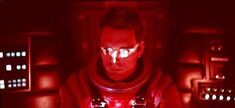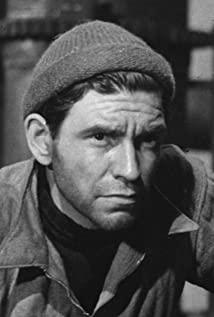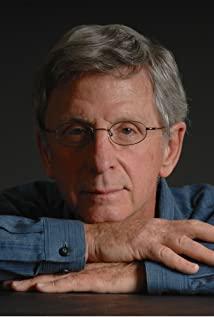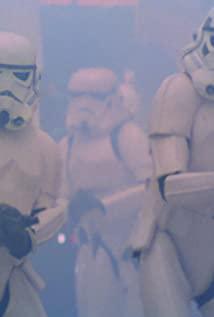Philosophy is actually homesickness, an impulse to return to the home.
Die Philosophie ist eigentlich Heimweh, ein Trieb, überall zu Hause zu sein.
-Novalis
The world-class best-selling book "The Alchemist" (The Alchemist) tells the story: a shepherd dreams that there is a treasure hidden under the pyramid, and after he has gone through all the hardships to get there, he learned that the treasure is only in himself. Under the fig tree in the abandoned church where shepherds every day.
In this story, there are two parts: "Going Out and Returning Home". The two are different from each other, but they are cleverly intertwined to form a circle-like connection.
The author of this book, Brazilian writer Paulo Coelho, is a loyal reader and fan of Argentine writer Borges. This best-selling story itself is also based on Borges’ short stories. The latter's creation was inspired by "One Thousand and One Nights", which is an anonymous and brilliant dream that belongs to all mankind.
"Going out and returning home" are not opposed to each other, but a common, even cyclical process, inseparable. Every creation-or every creator himself, can never avoid this black hole full of gravitational question: what is home? Fleeing, walking away, nostalgic, reconciling, returning home... These are all powerful classical motifs in literature, drama, film, architecture and other media, which effectively resonate emotionally with readers and audiences. It can be said that if you have never gone out or left, you will not really understand your homeland in repeated looking back; if there is no homeland as the initial anchor point for all behaviors, there will not be any outward movement, but only endless and endless. Drifting of the roots.
A work that has gained public recognition—"Glory"—is recognized as a classic worthy of being passed down, mostly because it captures (or coincides with) some of the most basic, strong, and shared feelings of mankind. On the one hand, I want to go out to explore, conquer something unfamiliar, and be curious about a distant unknown. On the other hand, I am faintly longing to return to the tranquility of my homeland. This mixed complex complex is deeply rooted in human nature. It is obviously not only manifested in "The Fantasy Journey of the Shepherd Boy", "Dream of Double Dreams", "Chinese Magic Lamp" or "One Thousand and One Nights".
The epic poem "Odyssey" by the blind poet Homer is also a story to go home. In comparison, the first part of Homer's epic, "Iliad", was about going out. For many scholars, much of the tradition of Western literature comes from these two works. Aside from the controversy over whether Homer really exists or not, the two epics were written about 2,600 years ago, but their light has been radiating to this day, and it has never decayed.
In 1998, the editors of the Modern Book Organization of the United States voted to list the 100 greatest theories in the English-speaking world of the 20th century. The first place, James Joyce's "Ulysses" (Ulysses), which is a parallel correspondence of Homer's epic "Odyssey." The word "Ulysses" was originally the Latin for Odysseus, the protagonist of "Odysseus". In the field of film and television, many critics and film enthusiasts regard Kubrick’s great work "2001: A Space Odyssey" as "the best in film history"-its Chinese translation can also be called "2001 Space Odyssey." On the same footing, Arthur Clark’s original book of the same name is also an immortal masterpiece in the hearts of many science fiction fans.
In "The Odyssey", the protagonist Odysseus went through hardships and wandered at sea for ten years, and was finally brought back to his hometown of Ithaca by a small boat after a deepest sleep and dream; "2001 Space Odyssey" ( (Hereafter referred to as <2001>) In the second half, the protagonist David Bowman experienced various accidents and frustrations in space. At the destination, Jupiter’s black stone stele took him into the most wonderful and crazy dreamland. Alien Space, but finally discovered that the boat took him to (back) a room in the human world. After quickly experiencing youth, middle age, and old age, he returned to the earth as a baby. From this perspective, the core of this movie is still a "going out and homecoming" that spans a long time and space scale.
01 "2001 Space Odyssey" and "Odyssey": Retelling the story
"2001" was released in 1968, director Kubrick said when referring to its title:
For us (Kubrick and Arthur Clark), the vast seas of the ancient Greeks are as mysterious and remote as the outer space of our generation. It occurred to us that for the Greeks the vast stretches of the sea must have had the same sort of mystery and remoteness that space has for our generation.
If "Ulysses" condensed and transformed the long journey of "Odyssey" into a casual day in Dublin, then "2001" magnified the imagination of "Odyssey" in time and space-islands became in space The stars, and the vast Aegean Sea described by Homer has become the galaxy and interstellar space that we are still fascinated by today.
Of course, "Odyssey" does not just appear in the title of the movie. The plot and characters of "2001" also have a lot of tribute to the epic. The fundamental link between these two works is the journey of exploration and homecoming, the "rebirth" of "heroes", and the complex relationship between humans and a higher power-these seem to be human beings. A permanent theme in the narrative.
As a follow-up to "Iliad", "Odyssey" is about the long journey home of the hero Odysseus after the Trojan War. It took him a full ten years to return from Troy to his hometown of Ithaca because of the anger of the sea god Poseidon, which was as long as the Trojan War. Suffering from homesickness, he and his crew wandered between the islands and encountered many mysterious creatures, gods and demigods. Some of them tried to tempt him to forget his hometown, some wanted to imprison him, block him or even kill him. With the help and instructions of the gods, Odysseus relied on his own ingenuity to resolve various obstacles, but in the process also lost all of his companions. In the end, he returned to Ithaca's home alone to be reunited with his wife and children.
Although Kubrick himself did not make more detailed interpretations, the story of "2001" and "Odyssey" do have many similarities. In Leonardo Whitt's book "Kubrick's 2001: A Triple Allegory" (Kubrick's 2001: A Triple Allegory), the author claims that the entire film can reflect almost all the stories of Odysseus during his journey. .
"2001" started from a prehistoric segment, unfolding the story of outer space exploration in 2001——
A black obelisk suddenly appeared in front of the prehistoric apes. They gathered curiously to observe the obelisk. Without their own awareness, the black stele enlightened the wisdom of the apes. After that, they learned to use bones as tools and weapons, conducted their first hunts, and expelled other apes from their territory. This is a milestone in human evolution.
After a beautiful editing, the plot has been fast-forwarded for tens of thousands of years; it seems that after the first contact, all the development of civilization has unfolded naturally without any extra ink. At this time, human beings who have been enlightened by this higher civilization have entered the space age. The character in this episode, Dr. Floyd, once again found a black obelisk on the moon. When this stone stele was exposed from the ground, under the sunlight, it emitted a super signal——
The film was edited again and jumped to the third story, which is 18 months later. At this time, the United States launched a plan to land on Jupiter. The plan is executed by five astronauts: three of them are in a "dormant" state, and the other two are captain David "Dave" Bowman and Frank Poole. In addition, a smart computer "HAL9000" is also mounted on the spacecraft.
During the cosmic voyage, HAL made an error. The frightening thing is that when Poman and Puller negotiated to close it, it was discovered by the computer. When Puller was on a mission outside the spacecraft, HAL disconnected his oxygen supply tube and stopped the life supply of three dormant astronauts at the same time, causing them to die. After the protagonist Bowman retrieved Puller's body, he shut down the HAL host. At this time, a video from the headquarters was shown on the screen, showing that the real purpose of this mission was to investigate the signal sent by the black obelisk on the moon to Jupiter.
Borman, who was alone, found that the spacecraft had been damaged and could not return to Earth. He continued to sail to Jupiter and found the third black obelisk; it was even larger and circled in Jupiter's orbit. When Portman further explored the stele, he entered a strange abstract time and space, and finally reached a neoclassical room with a grid floor. Here, he saw himself in three age groups. In the end, Borman, who was about to die, was lying on the bed and saw the black obelisk again. He stretched out his hand to the black obelisk. At this time, he seemed to return to the form of a baby, becoming a "star-child", floating. On the edge of the mother planet Earth.
02 Allusions and Metaphors: Parallel Comparison of Texts
The sea is like space, and islands are like planets-there is a deep connection between these background spaces. In addition, the movie also has many allusions to the epic in the setting of people and things.
First, the protagonist. The English name of the protagonist of the movie is Bowman, Bow is a bow, and man is a person. This surname means a shooter. Many critics pointed out that Borman is Odysseus, because Odysseus is also an archer. In terms of temperament, we can also see that Borman is not a hero who advocates sacrifice and bravery in the traditional sense, but, like Odysseus, is full of "wit" and even "cunning."
Second, the villain. The artificial intelligence of the Shenren in the movie plot-the villain HAL9000 has the same "one-eyed" image as the Cyclops. In "Odyssey", the Cyclops (Polyphemus, the child of Poseidon, the sea god) ate two of Odysseus’s crew members and imprisoned others for future food; in the movie, HAL also " Killed Portman’s crew.
In the end, Odysseus was able to escape by stabbing the eyes of the Cyclops (which angered Poseidon). In the movie, Portman turns off HAL by inserting a key. The similarity of this thrusting action may also mean a visual fit.
Third, the existence of gods or higher. In addition to the one-to-one correspondence between the background, the characters, and the plot, the most important connection between the film and the epic may be the understanding of "higher existence".
In "2001", the three black squares throughout represent the "higher existence"; in "Odyssey", the will and instructions of the gods are everywhere. The existence of this "superman" has greatly affected the direction of mankind, and the development and advancement of the story are based on curiosity and fear of such mysterious power. It can even be said that human stories seem to develop only through the intervention of God.
In the huge time span from ancient times to the "future", "2001" only selected the fragments of the "black obelisk", and through these two time slices, we seem to understand the process of human evolution without omission. These high-level alien civilizations in Kubrick's lens have a mythical and godlike temperament. Their intelligence is incomprehensible to humans, "just like humans are like gods to ants".
In ancient Greek epics, the fear of gods is a consistent theme. The victory of the war and the safe return of the hero are all affected by the will of God. In other words, in these epic stories, people need to be "spoken" by God. For example, it was Athena, the goddess of wisdom, who gave Odysseus the most help. She reminded and helped Odysseus many times because she admired Odysseus’s resourcefulness and even scheming, and she herself was also “wise and clever”. Smart".
In "2001", human beings are constantly being "spoken" by the black obelisk. This black stone slab has the characteristics of the gods of "wisdom", "enlightenment" and "civilization". On this point, Kubrick himself stated:
The concept of God is at the core of "2001", but it is not a traditional, human-like image of God. I don't believe in any monotheistic religion on earth, but I believe people can create an intriguing scientific definition of god (an intriguing scientific definition of god).
Fourth, the protagonist's going out and returning home. On the surface, the themes of "Odyssey" and "2001" seem to be somewhat inconsistent. From the perspective and purpose of the two protagonists, "Odyssey" is a story of "homecoming", while "2001" is an exploration of "going out".
But perhaps the most interesting intertextuality is also at this point-at the end of "2001", Portman returned to a "baby" state, returning to Earth after a long trip. Kubrick seems to also show us that this journey of exploring the unknown is also a story of "home". And through this relationship between "gods" and "people", we seem to be able to resolve this contradiction between "going out" and "going home". What we are trying to explain here is that in these two works, “homecoming” and “exploration” may be similar in nature and cannot be separated: we rely on a distant journey to contact a divine other. In the end, with the help of this process, I "reversed the self" and understood myself more truly and deeply.
Near the end of "2001", there is a famous image "Jupiter and beyond the infinite" (jupiter and beyond the infinite).
At this time, the protagonist Bowman has shut down HAL and drove the spacecraft to Jupiter. Using the third black obelisk as an entrance, he entered an unknown time and space. In terms of visual performance, this segment is magnificent, crazy, magnificent, and peculiar, like a kaleidoscope. In the past few decades, it has been discussed by countless fans and commentators from various angles and explained through various entry points, but Kubrick himself has always refused to give an "authoritative" statement on this part. He just said:
I tried to create a visual experience, a feeling beyond words that can be categorized or expressed, and that can penetrate the subconscious directly through emotional and philosophical content. I intend to use film to create a strong subjective feeling, which, like music, can directly reach the depths of the viewer's heart. I tried to create a visual experience, one that bypasses verbalized pigeonholing and directly penetrates the subconscious with an emotional and philosophic content. I intended the film to be an intensely subjective experience that reaches the viewer at an inner level of consciousness, just as music does .
Although "Odyssey" is a literary work, there is also a poetic metaphor between Odysseus's final home voyage and "death" and "rebirth". Many people think that the last part of "2001" should not be interpreted. Its strong visual experience is imprinted on the viewer's deep consciousness. I also think that this is a tribute to the "unknowable". But here, we still want to understand the relationship between "Odyssey" and "2001" from the perceptual level. In this part, metaphor may be more important than logic.
03 The inner connection between "going out" and "returning home"
The two actions of going out and returning home are linked by the emotion of "homesickness".
"Nostalgia" or "nostalgia" in English is "nostalgia". Its etymology comes from the ancient Greek "nostos", which means return, homecoming, and "algea", pain (pains)-homesickness, the pain of being unable to return home.
"Going home" and "homesickness" are one of the most important themes of the epic Odyssey. In the epic "Iliad", Achilles has to choose between the "glory" (kleos) of the battlefield and the "home" of safety. Although Achilles' death is not mentioned in "Iliad", his funeral is mentioned in "Odyssey", and we are also familiar with the story of Achilles' heel. Therefore, for Achilles, choosing the glory of the battlefield made him a hero, and the process of becoming a hero also means death. As for Odysseus's journey, the "glory" lies in returning to his hometown-"going home". This journey made him transform from a man to a "god" hero; in the process of this transformation, death and rebirth are still the core concepts.
In the thirteenth volume of the Odyssey, Homer describes the final journey home of Odysseus. At this time, Odysseus narrated the story of his long and arduous journey, and King Alkinus was impressed and determined to help Odysseus return home. He prepared ships and sailors for Odysseus, and Odysseus thanked him and got on the ship:
Odysseus immediately closed his eyes and went to sleep, warm,
The sweetest sound sleep, long sleep is not awake, as if dead.
Like an express car pulled by four horses, galloping in the plains,
Driven by the whip, join forces to move forward,
Leaping high, rushing towards the place to go,
The wooden boat tilted its stern high and opened the purple-blue waterway, the waves were flying, galloping on the roaring sea,
Walks smoothly and steadily, even if it’s a hovering eagle,
The fastest bird among feather birds can’t compete with it either,
The sea ship was swift and violent, breaking the waves forward, carrying
A mortal, as contrived as a god, in his heart
Have endured many sorrows, many sorrows, many years,
Born to death, through the fighting crowd, across the turbulent ocean currents;
But now, he lay down in a peaceful atmosphere, forgetting all his sorrows.
——Homer's Odyssey (translated by Chen Zhongmei)
On the surface, Odysseus left the battlefield triumphantly and returned home safely. But this seems to be particularly worthy of our attention: a closer look at Homer’s description, the hero does not stand proudly on the bow of the ship and ride the wind and waves back to his hometown as we imagined, but “close his eyes and go to sleep immediately”, “as if Death is normal".
Here, Odysseus’s final journey home has the same description as death, and “going home” seems to be also a kind of rebirth after “death”. The sea was turbulent and terrifying, and his ship was not in the sea, but was speeding like a carriage, faster than the fastest bird. The past battles and difficult journeys flashed by in Homer's narration as in memories, while Odysseus "forgot all the sorrows" in his dream.
If we continue to trace the earlier origins of the term “nostos”, some scholars believe that it comes from the Indo-European root “nes”, which means “return to the light or return to life”. The ancient myth of the stars, the most ancient language image of "return home".
When Odysseus finally arrived in Ithaca, a star also appeared.
When the brightest star rises up into the sky, more than the others
The constellations forecast the early dawn and the dawn of dawn more timely,
The ocean-going ship approached the shore of Ithaca.
In the final voyage, Odysseus was "rebirth" through this "death", which also seemed to make him a kind of being closer to God. When his boat stopped, Homer described a cave by the bay, a dwelling of a god.
The cave has two entrances,
One facing the north wind, mortals can go in,
But for the one facing south, it is God’s path,
Mortals never exceed their usefulness, and those who live forever enter here.
The sailor carried the sleeping Odysseus into the cave, and then left.
With the support of this text, let's take a look at the movie "2001" again. As we mentioned earlier, after the protagonist arrives at Jupiter, the 30 minutes at the end of the movie is difficult to describe in words, but when we intertextualize these "plots" with Odysseus’s dream home journey By comparison, many interesting similarities can be found.
Next to Jupiter, as Poman flew towards the black stele, he entered a "star gate". Here Kubrick uses a ten-minute lens to describe the sensory experience of this alien time and space.
There are many psychedelic images in this image. Abstract colors and graphics are constantly changing against a dark background. Sometimes it is a galaxy-like image, scattered light, like a graphic spread of bright pigments in the water, sometimes like stars, sometimes like embryos. And the umbilical cord, there is a combination of strange colors and natural patterns.
Portman's spacecraft advances in these images, just as Odysseus's ship sails in the dark and turbulent sea, which is like a scene that a hero might dream of in the deep sleep he enters.
After this bizarre journey, Poman was not thrown to the most desolate border of the universe, but arrived in a room in the human world. There seem to be many familiar objects here, such as beds, chairs, tables, cabinets, and even sinks and bathtubs. But it is so strange that it has no doors or windows. Of course, perhaps the most weird thing is the glowing grid ground. This is the space in which Kubrick and Clark imagined higher creatures (gods) to place and observe humans. This French-style room in the Louis XIV period may come from Borman's memory or subconsciousness.
An interesting comparison is that when Odysseus woke up in the cave of the gods, he returned to his homeland and saw that the surrounding scenes were not what his hometown looked like, because the goddess Athena covered the fog of Odysseus. Status, and sue him.
In this room, Portman grew old in just a few minutes. Finally, when he was old, he lay on the bed. At the moment of facing death, he saw the black obelisk again. He stretched out his hand to it, trying to touch it, like Michelangelo's Adam.
Next, he seemed to "return" to the state of a baby, or that he was "reborn" as a "star-child", floating on the edge of the earth. Perhaps through contact with the "god", human beings have made themselves more "human" "superhumans". This process is like rebirth or reconstruction, symbolizing the future and hope of a certain kind of human beings.
Then he began to wait, sorting out his thoughts, and thinking deeply about his untested abilities. Although he is already the master of this world, he is not sure what to do next.
However, he will figure it out.
——The end of Arthur Clark's 2001: Space Odyssey, Translator: Hao Mingyi
Odysseus’s journey home and Poman’s exploration of Jupiter are full of contacts with non-human gods, creatures, and machines. In the process, they seem to have tried to understand the other and get to know the other in a deeper level. As a person's self.
For this, we may have to mention Nietzsche. Whether it is Bowman's return to a baby state or his becoming a "star child" (a more advanced "person"), it clearly points to "eternal reincarnation" and his "superman" theory. Obviously, for Kubrick, Nietzsche has an important meaning and position in this film. In the opening and ending credits, Kubrick used the symphonic poem written by Richard Strauss with the same name as Nietzsche’s "So Zarathustra"; the music itself is also full of life force and Passion.
Science fiction works—especially those of the golden age of the 20th century—have an undeniable spirit of myth in the core. More specifically, in our parallel comparison, the scene just described, the "house in the depths of the universe", seems to be a typical science fiction paradigm.
In addition to "2001", the two younger films also revolve around the motif of "Going Out and Returning Home", at least in terms of spatial performance. In the "Contact" released in 1997, the protagonist Allie also fell into a crazy, dreamlike wormhole trip and came to a place that looked like a beach on the surface of the earth, and met His deceased father. This is how the higher civilization comes into contact with her.
In Interstellar released in 2014, the protagonist Cooper traversed the dreamlike five-dimensional space after falling into a black hole, and finally returned to his daughter's room at the house where he was "separated by a wall".
The motif of "Going Out and Returning Home" appears in these sci-fi narratives in a specific way: after a journey that human civilization cannot perceive and attempt, the protagonist seems to be left in the farthest part of a certain universe and plunged into the deepest. And the most abstract nothingness, but in fact, they have returned to the space of the most familiar home.
The circular motion in this space can also be used as a metaphor for an abstract exploration process. Qian Zhongshu reminds us in "Say'Going Home'": All intellectual exploration may also be manifested in the three stages of home, going out, and going home. When we are hit by a problem and our thoughts are in a state of confusion, doubt, and anxiety, we feel as if we have become a traveler away; only when the problem is solved, the "shock" in the heart is calmed, and we Only then did he return to a state of calm again-after the mind went through hardships and dangers, he finally returned to the house, restoring the peace of the past.
The amazing thing is that we continue to explore problems and seek new knowledge. After a long period of hard work and even painful speculation, we finally obtain a wonderful new point of view. It often makes people feel that "déjà vu" is like "reunion of the old." "It's like this thought has been buried in our own minds, and we just need to be "re-seen" by us. Plato said the familiar sentence in the "Miino": "All research and all learning are nothing but memories." In the many great sci-fi works described above, the protagonist is also striding across the infinite distance. Time and space, but miraculously returned to the house, only at this moment, I have the deepest understanding of my own life.
It can be said that the concept of "home" is simple and straightforward, but at the same time eternal and infinitely broad. "Home" is space-it can be physical, imagery, or metaphorical. And "going out" and "going home" are both a kind of movement, which can occur in the movement of the body, or reside in the impulse of the mind. Whether it is exploring space or a long journey home, it is a movement between the known and the unknown, the self and the other, life and death. "Odyssey", "2001" and many other great works seem to show us that these two seemingly opposite movements are actually in the same direction.
If you like this article, please follow the WeChat public account "Dune Research Institute" to get original content updates first-hand
View more about 2001: A Space Odyssey reviews











